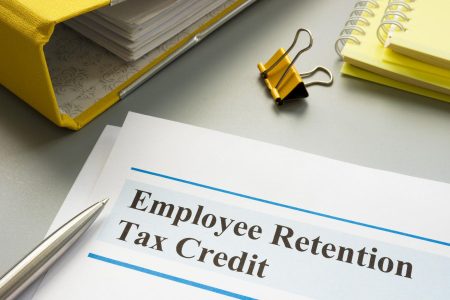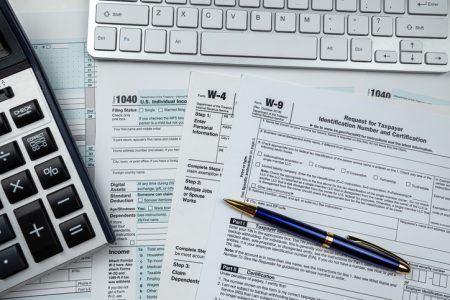Whether you are splitting a bill or selling handmade goods, the IRS may expect you to report certain payments. This is especially the case for business-related transactions. If you are using Venmo regularly, it is important to know when taxes apply, as well as how to minimize or avoid Venmo taxes. With recent updates to IRS reporting thresholds, even small side gigs or casual sales could trigger a tax form if not properly categorized.
A financial advisor can help you follow tax rules, lower what you owe, and set up a system to track your money, whether you sell items occasionally or run a full-time business.
Venmo and Taxes
Over the last few years, the IRS has adjusted reporting guidelines in an effort to tighten its oversight of digital payment platforms like Venmo, PayPal and Zelle. Under the new 2026 rules, third-party payment processors must report business transactions totaling more than $600 in a calendar year to the IRS using Form 1099-K.
This change significantly lowered the reporting threshold from the previous limits of $20,000 and 200 transactions. This means many casual sellers and freelancers now fall within the IRS’ reporting limits.
However, it is important to note that the IRS delayed this ruling in 2023, keeping the original limits, before beginning to phase in the new rules.
The IRS reporting thresholds are as follows for each tax year:
- 2024: $5,000
- 2025: $2,500
- 2026 and after: $600
How to Avoid Unnecessary Tax Reporting on Venmo

One of the simplest ways to avoid issues with Venmo tax reporting is to categorize your transactions correctly.
Venmo offers two key labels: “Goods and Services” and “Send to a Friend.” These labels determine payment classification and whether IRS reporting is necessary:
- Use “Send to a Friend” for personal transactions. If you are paying a friend for shared expenses or sending money as a gift, use the “Send to a Friend” option. These transactions are considered personal and are not subject to IRS reporting requirements.
- Avoid mislabeling business transactions. While it may be tempting to label a business payment as personal to avoid tax reporting, doing so could raise legal issues. Misreporting business income can result in IRS penalties, fraud and interest charges.
- Keep personal and business accounts separate. Venmo allows users to create business profiles, which can help you track and report income properly while keeping your personal transactions clean. Separating your activity also simplifies record keeping and minimizes audit risk.
How to Minimize Taxes on Business Income
If you are using Venmo to receive payments for freelance work, side gigs or product sales, that income is generally taxable. It must be reported, regardless of whether you receive a 1099-K.
- Track and deduct business expenses. You can deduct necessary business expenses from your taxable income. This might include supplies, software, mileage, home office costs and even payment processing fees. Keeping detailed records of your income and expenses is crucial for accurate reporting and maximizing deductions.
- Use a business entity structure. Operating under a business entity like an LLC or S Corp may open up additional tax planning opportunities. For example, S Corps allow some owners to take part of their income as distributions instead of wages, potentially minimizing self-employment tax obligations.
- Consider quarterly estimated taxes. If you earn more than $1,000 in business income annually, the IRS may require you to make quarterly estimated payments. Paying in installments throughout the year can help you avoid penalties and spread out your tax burden.
- Work with a financial advisor or tax professional. Taxes for self-employed individuals can get complicated. A financial advisor or CPA can help you take advantage of legal deductions, stay compliant with IRS rules and avoid costly mistakes.
Frequently Asked Questions (FAQs)
Do I Have to Pay Taxes on Money I Receive Through Venmo?
No, it is not taxable if the money is for personal reasons, like splitting a dinner bill or receiving a birthday gift. However, if you receive payment for goods or services, that income is generally taxable. Venmo may report it to the IRS if you exceed the yearly threshold.
Will I Get a 1099-K From Venmo?
You may receive a 1099-K if you accept more than the yearly threshold in payments through your Venmo business profile or through transactions marked as “Goods and Services.” If so, Venmo will issue the form by January 31 of the following year.
Can I Avoid Venmo Taxes By Labeling Payments as Personal?
Labeling a business transaction as personal to avoid taxes is misreporting and may also be considered tax fraud. It is best to report your income accurately and take advantage of deductions to lower your liability legally.
What Should I Do If I Receive a 1099-K By Mistake?
If you receive a 1099-K for what you believe were personal transactions, contact Venmo immediately to correct the error. You may also need to explain the situation to the IRS and provide documentation showing the income was not business-related.
Bottom Line

As the IRS expands its oversight of third-party payment platforms, accurate record keeping and proper payment categorization are more important than ever. Whether you are casually selling items or running a small business, mislabeling transactions or ignoring income reporting rules can lead to headaches–and penalties–later on. That is why it is so important to understand not only how it works but also how to avoid Venmo taxes altogether. Consider asking an experienced financial advisor or tax professional for help structuring your business.
Tax Planning Tips
- If you’re looking for ways to lower your tax liability, a financial advisor who specializes in tax planning can help optimize your finances. Finding a financial advisor doesn’t have to be hard. SmartAsset’s free tool matches you with vetted financial advisors who serve your area, and you can have a free introductory call with your advisor matches to decide which one you feel is right for you. If you’re ready to find an advisor who can help you achieve your financial goals, get started now.
- If you want to know how much your next tax refund or balance could be, SmartAsset’s tax return calculator can help you get an estimate.
Photo credit: ©iStock.com/Jacob Wackerhausen, ©iStock.com/Vadym Petrochenko, ©iStock.com/gorodenkoff
Read the full article here









